How To Make SFX Prosthetics For The Face
7th May, 2024
SFX face prosthetics are at the forefront of transformative looks. Learn how to make your own here!
Delving into special effects for the stage and screen, one cannot overlook the power of SFX makeup prosthetics. In this article, you will learn how to make SFX face prosthetics, highlighting the intricate process from crafting to applying. No matter whether you’re a professional artist or a curious beginner, understanding how SFX makeup works and mastering the craft of makeup prosthetics can allow you to elevate your creative expressions and bring those visions to life.
Browse our exclusive range of SFX makeup essentials so that you have everything that you need when undertaking SFX face prosthetics
8 Tips For Effective SFX Prosthetic Face Creation
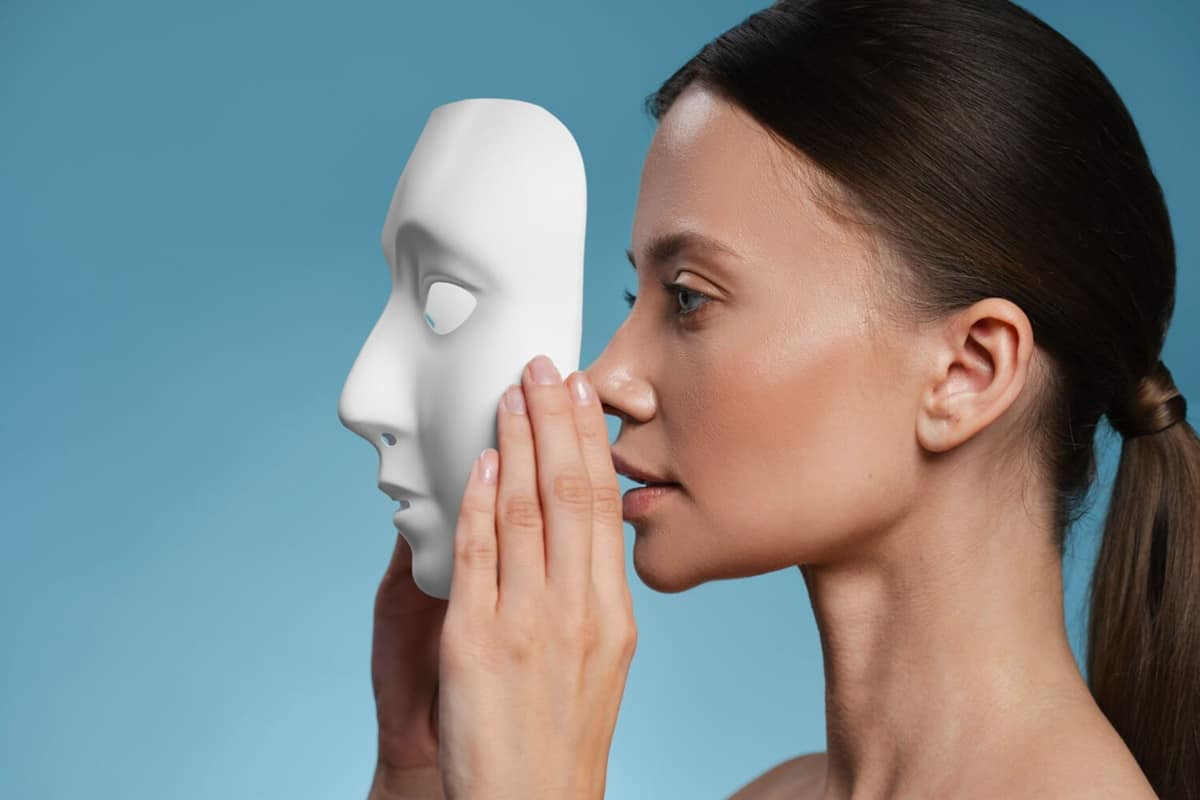
Creating SFX prosthetics, especially for the face, is an art that blends creativity with technical skill. Here are some invaluable tips and tricks on how to craft the perfect SFX face prosthetics:
- Speed Drying Techniques
A common question about how to make SFX prosthetics involves drying times. Speed up the drying process between layers of latex with a hair dryer on a low heat setting. This prevents the materials from warping or melting, ensuring the quality of your face prosthetics remains high.
- Ideal Sculpting Surfaces
For crafting detailed makeup prosthetics, your choice of surface matters. Lightweight, smooth surfaces like clipboards or plastic plates provide the perfect base for sculpting small, intricate pieces. These surfaces are not only versatile but also easily portable, allowing for flexibility in your workspace.
- Mannequins for Design Accuracy
Utilising half or full-head mannequins can greatly improve the design process of your SFX prosthetics. These mannequins offer a generic fit that suits most actors, providing a realistic base for your creations. Why not try this Mehron face painting practice head too?
- Perspective Value
When making facial prosthetics, viewing your work from multiple angles is crucial. A turntable can be an essential tool, offering a 360-degree perspective to ensure your prosthetic looks natural from every viewpoint.
- Material Choices and Their Uses
Selecting the right material is vital in how to make SFX makeup effectively. Plasticine, for example, offers firmness yet becomes pliable with a few seconds in the microwave. For larger, more durable projects, materials like earthenware or WED 217 clay are ideal, though they must be kept moist during use. Soft modelling clay is excellent for smaller pieces as it remains flexible and reusable.
- Release Agents and Layering
Applying a thin layer of Vaseline as a release agent on your sculpted pieces can prevent sticking and facilitate easier demolding. In terms of layering, starting with a strong base like Ben Nye Liquid Latex ensures durability, but be mindful of the layer thickness to maintain detail in smaller prosthetics. But if liquid latex is not your preference, try these liquid latex alternatives instead.
- Sculpting with Precision
Maintaining short nails can enhance your sculpting accuracy, allowing your fingertips to effectively judge and smooth the clay’s thickness. This is especially important for adding fine details to your SFX prosthetics.
- Mobility and Realism
In constrained spaces, keeping your project mobile is key. When adding realistic details like teeth, using pre-made false teeth can save time and enhance the appearance. To finish, don’t overlook skin texture. Tools like an old toothbrush or toothpick can add lifelike pores and wrinkles to your makeup prosthetics, heightening the realism of the final product.
Creating SFX face prosthetics involves meticulous steps, each crucial for achieving professional results. This section will walk you through the process, ensuring clarity and success in your SFX makeup journey.
Look out for our SFX performance materials that enable you to let your imagination run wild.
How To Create SFX Face Prosthetics: Step By Step
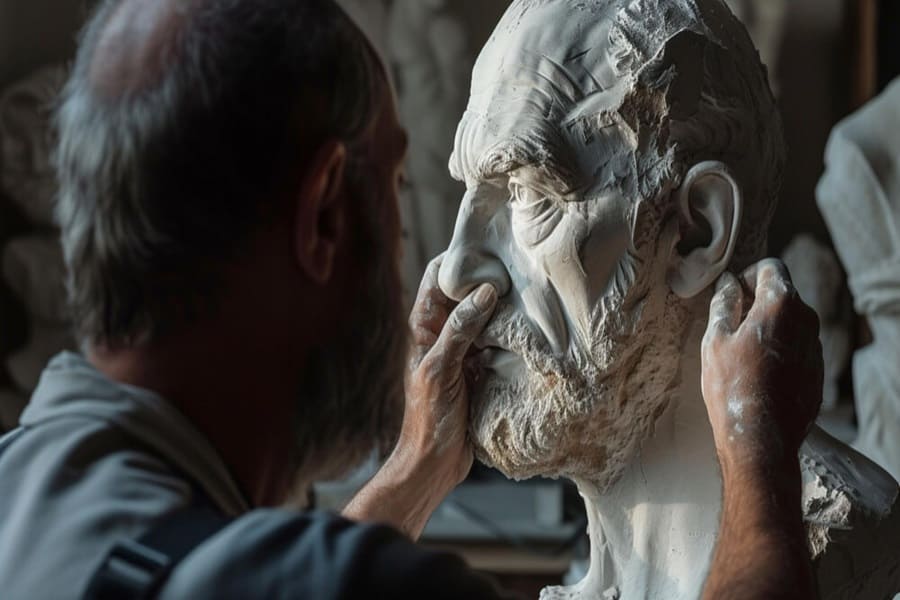
By following these steps meticulously, you’ll be well on your way to creating stunning and realistic SFX face prosthetics, embodying the artistry and precision that SFX makeup is known for.
Step 1: Gathering Your Supplies and Tools
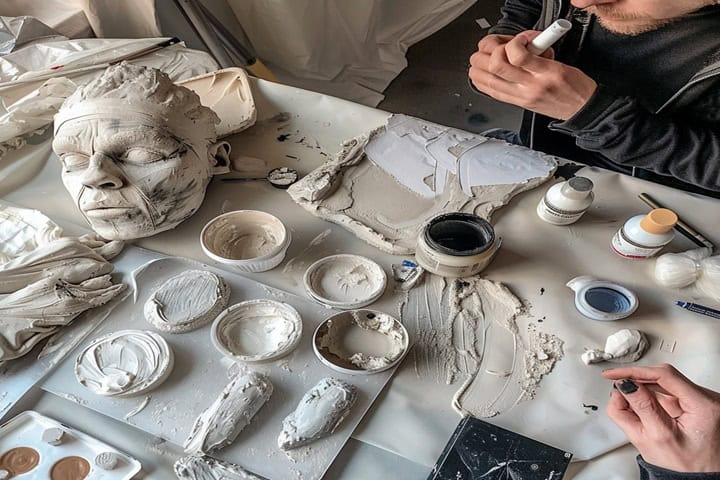
To begin, ensure you have the right materials and tools. For makeup prosthetics, particularly those used in SFX, the quality and type of materials can significantly impact the final outcome.
Supplies:
- Modelling Clay: Select non-drying, pliable clay such as Plastalina. Its colour doesn’t affect the process, but white is preferred for visibility.
- Plaster of Paris: A staple for mould-making, this material should be chosen for its reliability and ease of use.
- Liquid Latex: Essential for SFX makeup, liquid latex forms the base of many prosthetics. Ensure it’s specifically designed for SFX to avoid skin issues.
- Vaseline (optional): Aids in removing the prosthetic from the mould smoothly.
Tools:
A variety of sculpting tools can be utilised, ranging from specialised equipment to everyday household items like kitchen utensils.
Use a disposable, waterproof sheet (like foil or wax paper) to protect your work surface.
Other necessities include a bowl, water, and a mixing implement, with disposable cups as an optional convenience.
Prepare a clean, flat workspace and lay out your materials before beginning to sculpt your prosthetic.
Learn how to use scar wax for other SFX makeup methods.
Step 2: Sculpting the Prosthetic
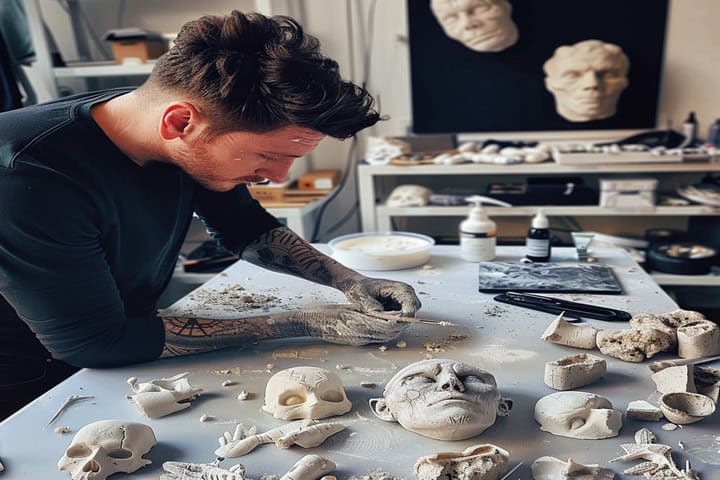
The sculpting phase is where your creativity shines. Starting with a block of clay, mould it into the desired shape of your prosthetic. This shape will be the basis for your final SFX piece.
Sculpting Tips:
- Remove any jewellery that might hinder the sculpting process or get damaged by clay.
- Use reference images to guide your design, ensuring accuracy and detail in your SFX prosthetics.
- Employ various tools to achieve different textures and details. The back of a spoon, for example, can smooth joins and edges, contributing to a more natural appearance.
Step 3: Creating the Mould
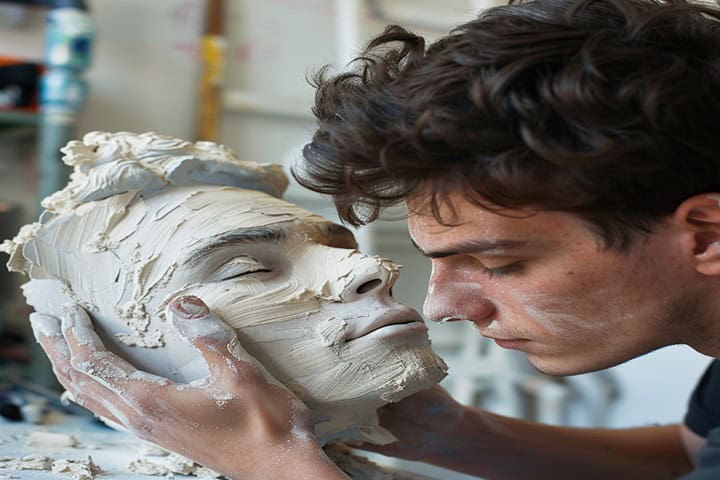
With your sculpture complete, it’s time to cast the mould using Plaster of Paris.
Moulding Process:
- Prepare your workspace to accommodate the fluid nature of plaster, using containment methods like taped card-stock strips if necessary.
- Mix the plaster according to its instructions, ensuring a smooth, lump-free consistency.
- Carefully pour the plaster over your clay model, ensuring complete coverage and allowing time for bubbles to escape. The clay should be covered entirely with either ¼ inch or 1 inch of plaster.
- After pouring, the plaster needs to set, typically taking around 24 hours to dry fully.
- Once set, the clay model can be carefully removed from the mould. Intricate designs might require the use of tools like needles or toothpicks to extract residual clay without damaging the mould.
Caution: Never rinse your plaster mould with water as it can weaken or damage the structure.
Step 4: Casting Your Prosthetic
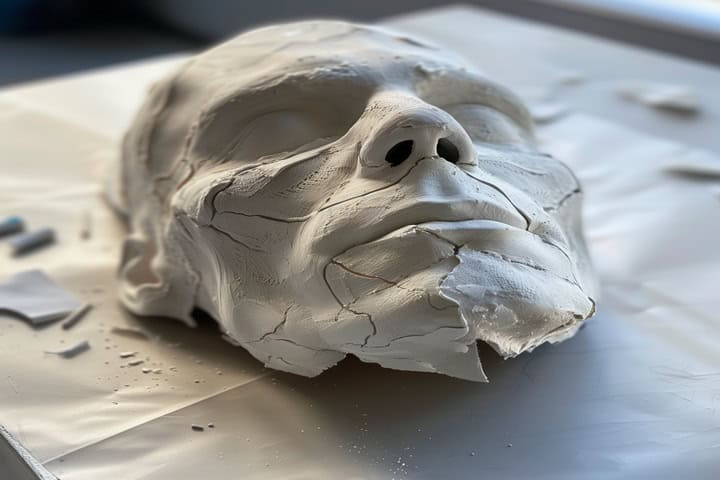
Reaching this stage means you are ready to bring your SFX prosthetics to life. Casting is the final step in creating your face prosthetic, requiring precision and care.
Casting Process:
- Prepare Your Workspace: Ensure a clean area to avoid any latex spillage. Arrange your mould upside-down for easy pouring of the material.
- Apply Release Agent: If using, coat the inside of your mould with a thin layer of Vaseline. This helps in removing the prosthetic smoothly later on.
- Pour the Latex: Carefully fill the mould with liquid latex. For those with sensitivities, seek alternative materials like ‘fauxtex’ to avoid allergic reactions.
- Let it Set: Allow the latex to cure for 24 hours, ensuring it solidifies completely.
Once cured, gently extract the prosthetic from the mould. This process may require patience, especially with specific designs. The result is a unique SFX makeup prosthetic, crafted by your hands, ready for application and capable of transforming appearances dramatically.
Simple Techniques On How To Make SFX Makeup
In conclusion, creating your own face SFX makeup prosthetics requires delicate planning, sculpting, and casting. From gathering the right materials to the final reveal of the prosthetic, each step is pivotal in achieving professional and lifelike results. With patience and creativity, anyone can craft stunning face prosthetics, pushing the boundaries of imagination and transforming the ordinary into extraordinary in the world of special effects makeup.
Check out these great SFX makeup designs in horror films.
FAQs
What do makeup artists use for prosthetics?
What are SFX prosthetics made of?
Is SFX makeup safe?
What is the difference between SFX and prosthetics?
Sources
Neil’s Materials. (2023) Exploring Horror Films with Great SFX Makeup. [online] Available at: https://www.neillsmaterials.co.uk/exploring-horror-films-with-great-sfx-makeup/ [accessed 09/04/24]
Hey there! I’m Isabelle Kerrington, and I’m thrilled to share my passion for the performing arts through my blog. Focusing on theatre makeup, my posts will cover everything from product recommendations to helpful tips and engaging tutorials. Join me on this exciting journey as we explore the magical world of theatre makeup together.
Leave a Reply